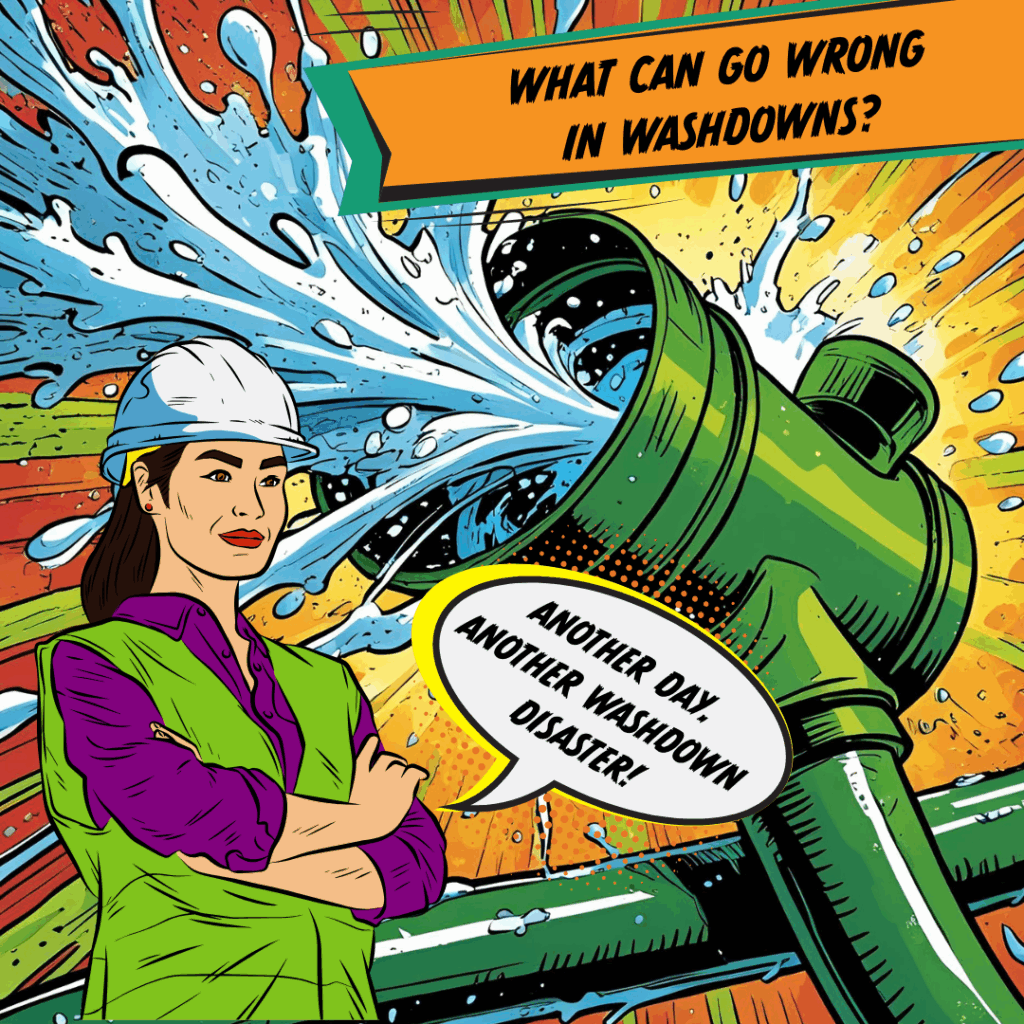
Food Line Washdowns: Hidden Problems & Fixes
Washdowns Spoiler: It’s often the parts you can’t see that fail first — leaving your food line down and hygiene scores hanging by a thread.
In food production, high-pressure washdowns are non-negotiable. They’re the frontline defence for hygiene standards, food safety, and compliance. But here’s the kicker: they’re also brutal.
While the factory floor might look pristine after a thorough rinse, hidden behind the guard plates and housings lies a very different story. That’s why components that aren’t designed to survive repeated exposure to water, chemicals, and heat can quietly degrade over time – and when they fail, it’s almost always at the worst possible moment.
At Godiva Bearings, we’ve seen how washdown environments can wreak havoc on even the toughest systems. Here are the five most common washdown pitfalls and what you can do to avoid them.
1. Seal Failures: When Washdowns Let Water Past the Guard
Seals are designed to protect what’s inside a bearing, but in high-pressure washdowns, they’re often the first line of defence to crumble. Consequently, one wrong move with a pressure washer and water blasts straight past the seal — especially if:
- The seals are basic or semi-open
- You’re cleaning too close or too hot
- The spray jet is angled poorly
Once that protective barrier is breached, it’s game over for the grease inside. What happens next? 


Why does this matter? It matters because, seals are often assumed to be “washdown-safe” without checking their actual ratings. Substandard seals let water in and turn a scheduled clean into a ticking time bomb.
💡 Pro Tip: Always check your cleaning methods and use bearings with advanced sealing systems designed specifically for washdowns.
2. Grease Breakdown: The Silent Bearing Killer
Water and grease don’t mix — unless you’re trying to make bearing soup. So, every washdown flushes away a little more grease, even in the best-maintained systems.
- Frequent washdowns emulsify the grease
- Poorly chosen lubricants break down faster than you’d expect
- Metal-on-metal contact creeps in silently
Over time, the lack of lubrication causes increased friction, leading to heat build-up and accelerated wear. What’s worse? These issues rarely show up on visual inspections. Therefore, the bearing will look fine right up until catastrophic failure.
💡 Pro Tip: Switch to washdown-resistant auto-lube systems for consistent protection and avoid unplanned downtime.
Why is this critical? Because every unscheduled stoppage can cost thousands in lost production and hygiene compliance failures.
3. Pooling Water = Bacteria + Corrosion
Ever seen a bearing mounted flat on a frame, with water pooling underneath – just out of sight? It might seem minor, but this creates the perfect breeding ground for bacteria and corrosion.
- Hidden pools of water destroy the housing over time
- Even hygienic bearings will fail if they sit in puddles
- These areas are often missed in daily visual checks
Unchecked pooling creates a double hazard: it compromises component longevity and risks a hygiene audit nightmare.
💡 Pro Tip: Redesign mounting points to allow water to drain and keep the surface dry. If redesign isn’t possible, schedule more rigorous post-wash inspections in those areas.
4. Housing Corrosion in WashdownS Zones
On the outside: shiny and fine.
Inside the housing: rust rings, flaked paint, and pitting.
This often happens when:
- Mild steel is painted and passed off as “washdown-rated”
- Coatings fail after just a few cleaning cycles
- There’s no drainage behind housings
Over time, even small defects in coatings can let water in, leading to rapid corrosion that eats away at structural integrity. Once corrosion sets in, it’s rarely isolated — neighbouring components often start to fail in quick succession.
💡 Pro Tip: Consider polymer or stainless housed bearings for the harshest zones. These options resist both the chemical and thermal shocks that come with regular cleaning cycles.
Why is this overlooked? Because housing corrosion is invisible until you take the cover off – and by then, it’s already too late.
5. Post WashDOWNS Lubrication Mistakes That Shorten Bearing Life
Washdown complete? Great — now lube it. Except…



Too often, lubrication after cleaning is rushed or skipped entirely. The result? Bearings that look fine from the outside but are already failing internally.
💡 Pro Tip: Automating re-lube cycles is one of the easiest wins in washdown zones. It’s faster, cleaner, and more consistent.
Why does this happen? In many cases, teams assume post-wash lubrication is “someone else’s job,” creating gaps in maintenance schedules that lead to preventable failures.
What to Do Next
To keep your food production line running smoothly, follow these simple steps:
- Audit every bearing in your washdown zones.
- Spec for survival, not just function (Correct IP ratings, food-safe grease, coated housings).
- Check for pooling and redesign surfaces if needed.
- Automate lubrication cycles where possible.
- Don’t wait for failure – ask for help early.
At Godiva Bearings, we specialise in helping food manufacturers build hygiene into the core of their systems. Our team understands the challenges of washdown environments and can recommend solutions that don’t just survive – they thrive.
Conclusion: Don’t Let WASHDOWNS Kill Your Bearings
Washdowns are essential — but if your components aren’t built for them, you’re washing away uptime, hygiene scores, and peace of mind.

Don’t wait for your bearings to whisper their first warning signs. By the time they do, it’s often too late.

TOM HAMLETT
Tom Hamlett is a respected authority in the global bearings marketplace, with over 35 years of experience in industrial bearings, lubricants, and adhesives across a wide range of industries. As Managing Director of Godiva Bearings, Tom has built a trusted business renowned for its commitment to quality, technical expertise, and ethical service. Under his leadership, Godiva Bearings has remained the UK’s only trade-exclusive bearings supplier, proudly serving engineers and distributors worldwide since 1977. Tom’s in-depth knowledge and dedication have cemented his reputation as one of the most knowledgeable figures in the sector.
